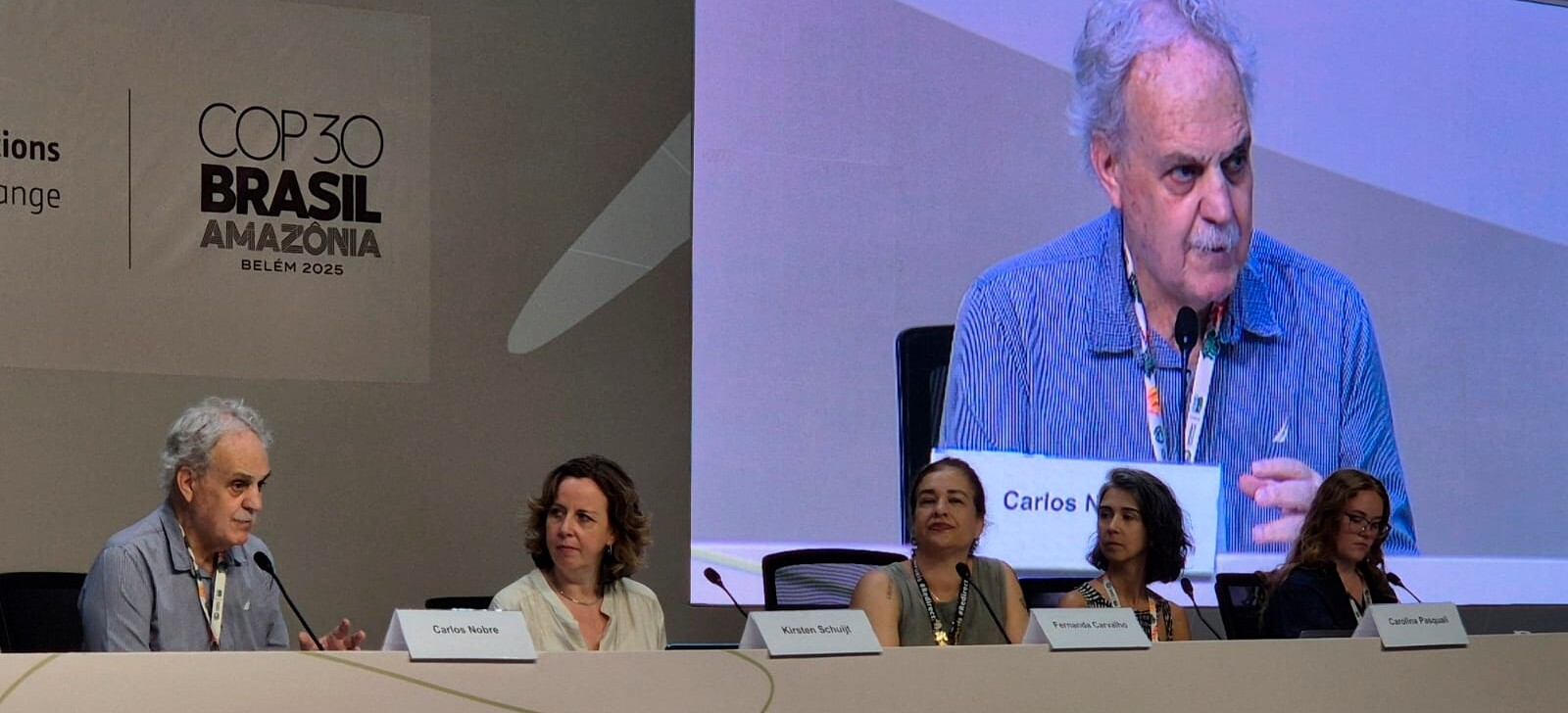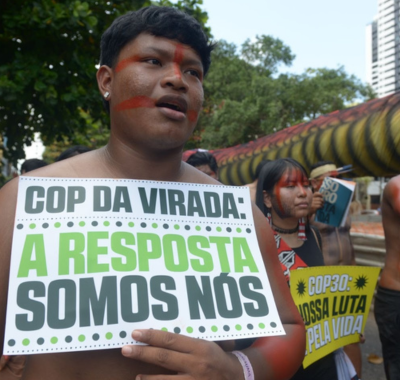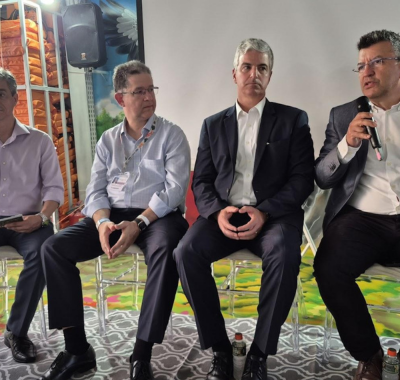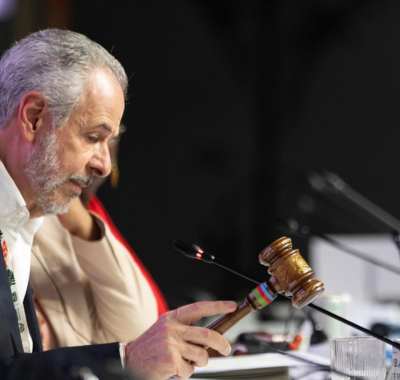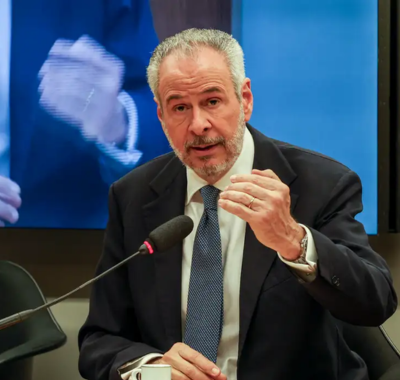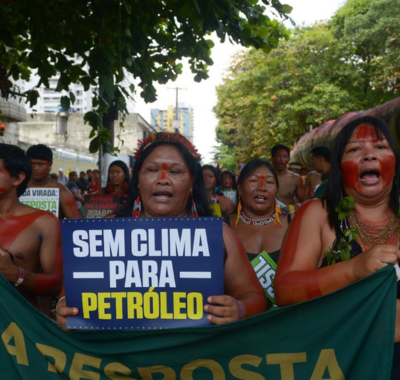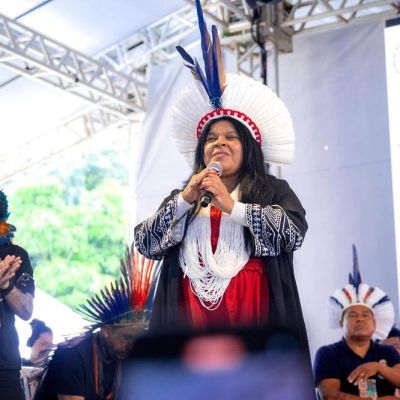U.S. absence at COP30 exacerbates financial challenge to meet climate targets
Fred Santana – From Cenarium
Translation: Roberto Cataldo/Verso Tradutores
BELÉM (PA) – The official absence of the United States at COP30 formal negotiations was highlighted at a US Climate Action Network press conference held this Monday (17), on the seventh day of the climate event in Belém, Brazil. Representatives of U.S. organizations stated that, even without a government delegation present, the country “casts a shadow” over the debates and increases the deadlock on core issues such as climate finance and loss and damage.
According to Brandon Wu from ActionAid USA, the historical obstruction of climate finance by the U.S. explains why issues such as adaptation and loss and damage are stalled. “The country is not here, but it is casting a long shadow over these negotiations,” he said, adding that its stance has influenced other developed countries to avoid robust financial commitments.
Wu said that the lack of resources is currently the biggest obstacle to COP30. “Without support, without funding, ambition is impossible in many parts of the world,” he said. He pointed out that the new loss and damage fund announced on the first day of the Conference has only US$250 million, while the annual needs of countries in the Global South reach hundreds of billions. According to him, “it’s a drop in the ocean,” stressing that rich countries “haven’t delivered historically, aren’t delivering now, and are giving every indication that they won’t deliver.”
Members of US organizations said that the country “casts a shadow” over the debates, even though it has no official delegation at COP30 (Fred Santana/CENARIUM)
The criticism extends to US domestic policy. Wu recalled that “our government unilaterally invented the US$100-billion target as well as the rules for how that money would be counted,” pointing out that the United States “has repeatedly said that there’s no money, when we know that it’s not true.”
As an example, Brandon cited the US$200 billion spent by the country this year on deportation operations, contrasting it with the US$17 million allocated to the loss and damage fund. “It’s a cruel joke compared to where our government actually puts money,” he said.
Criticism to U.S. climate and political legacy
Rachel Cleetus, from the Union of Concerned Scientists, stressed that the insufficient commitments by large emitters, including the United States, leave the planet close to exceeding the 1.5°C limit. “We are here because of the insufficient action of political leaders, including our own,” she explained, arguing that a just energy transition requires the end of fossil fuels.
Rachel Cleetus, from the Union of Concerned Scientists (Reproduction)
Gemma Carolina Gutierrez from Youth N’ Power pointed out that the U.S. are still absent not only physically but also morally and politically. “Their absence remains as a political shadow,” she commented, saying that the country avoids acknowledging historical damage and reproduces inequalities that fall on black, indigenous and migrant populations. “Real solutions don’t come from institutions that don’t recognize the damage in the first place,” says Gutierrez, emphasizing that community movements develop concrete responses both inside and outside the US.
Demands for recognition and reparation
Activist Cheryl Kwapong from The Chisholm Legacy Project said that African American communities, which have been historically affected by environmental inequalities, must be recognized as a formal constituency within the UN.
“African Americans deserve a seat at the table when we are thinking about this COP,” she said. She recalled that “the American nation was built on slavery and on the backs of enslaved peoples,” demanding a real commitment to reparations and participation from the U.S. government.
Kwapong highlighted that these populations face climate impacts ranging from the Caribbean to the Mississippi Delta, from the Amazon to Nigeria, but also play a leading role in local solutions. “We are resilient by nature; we’ve survived the slave trade, apartheid, and oppression,” he said, stating that they hope to leave COP30 with concrete measures, not just speeches.
Closing the press conference, Brandon Wu summarized the role of the U.S. in today’s crises. “The Paris Agreement is not failing; it’s doing exactly what it was designed to do,” he said. “The governments of the Global North are the ones failing, not fulfilling their obligations while planning new fossil fuel expansions, like the United States,” he criticized. Wu concluded by saying that the necessary reforms begin “at home, in our governments” and not in the multilateral architecture.
U.S. absence increases uncertainties at COP30
Annual inventories from the United States Environmental Protection Agency (EPA) show that the country has remained among the world’s largest emitters of greenhouse gases for more than three decades, releasing between 5.5 and 6.7 billion tons of CO2 equivalent per year since 1990.
Brandon Wu pointed out that the US spends more on deportation than on the environmental loss and damage fund. (Fred Santana/CENARIUM)
Considering the historical cumulative amount since the Industrial Revolution, international research indicates that the U.S. accounts for about a quarter of the planet’s emissions, making it one of the main contributors to today’s global warming.
This historical weight was one of the reasons that led the U.S. to present its first national contribution under the Paris Agreement in 2015, pledging to reduce emissions by 26%-28% by 2025 over 2005. At the time, the commitment was considered central to global ambition as the country alone emitted more than entire continents.
The scenario changed when the Trump administration announced its formal withdrawal from the Agreement, a measure implemented in 2020 and resumed in 2025 after another electoral victory, again interrupting federal climate policies and blocking international climate finance initiatives.
Greenpeace analysts during COP30 in Belém, Brazil (Fred Santana/CENARIUM)
When the US returned to the agreement in 2021, it presented a more ambitious goal: to reduce emissions by 50%-52% by 2030 and achieve carbon neutrality by 2050, as detailed in the government’s Long-Term Strategy.
Official data show that the U.S. is still far from the path to meeting this target. In 2022, for example, emissions were about 15% below 2005 levels, when they should be close to 30% to be in line with the 1.5°C limit.
This report was produced by Revista Cenarium through the Collaborative Socio-environmental Coverage of COP 30. Read the original report at: https://revistacenarium.com.br/ausencia-dos-eua-na-cop30-amplia-impasse-financeiro-sobre-metas-climaticas/

